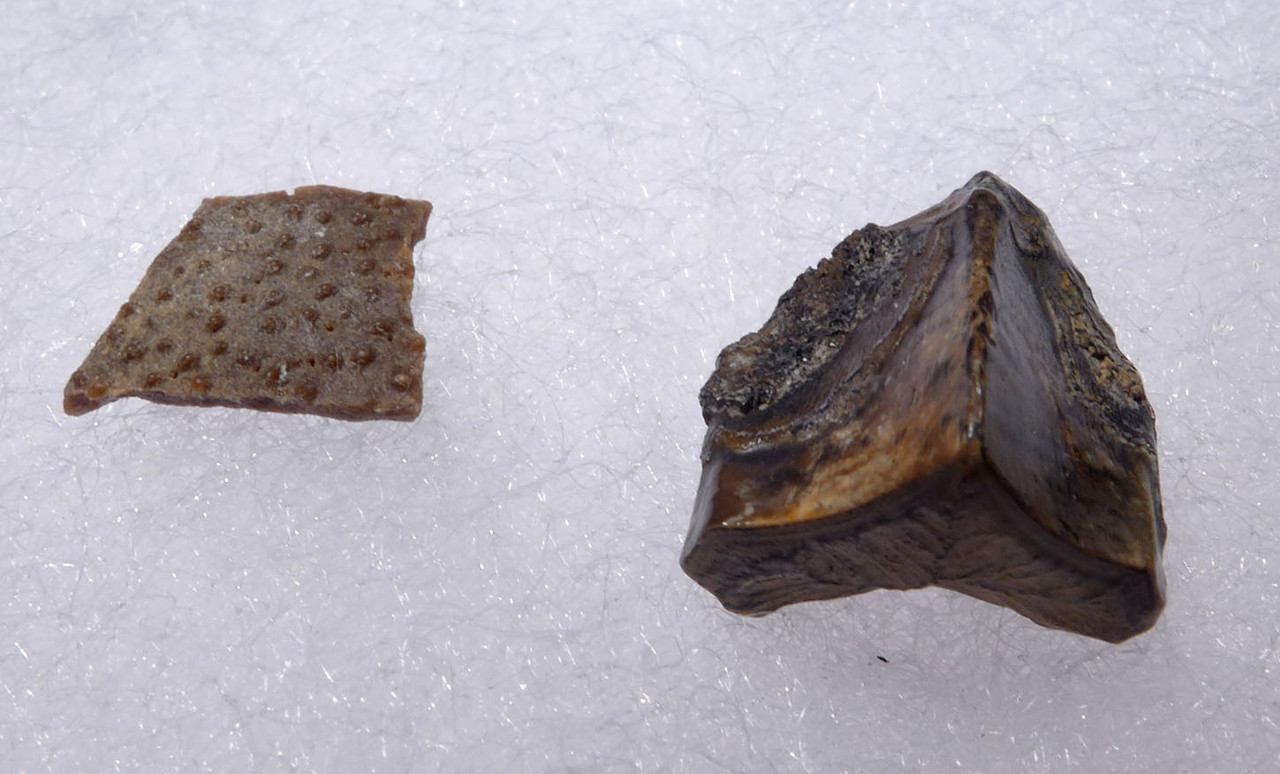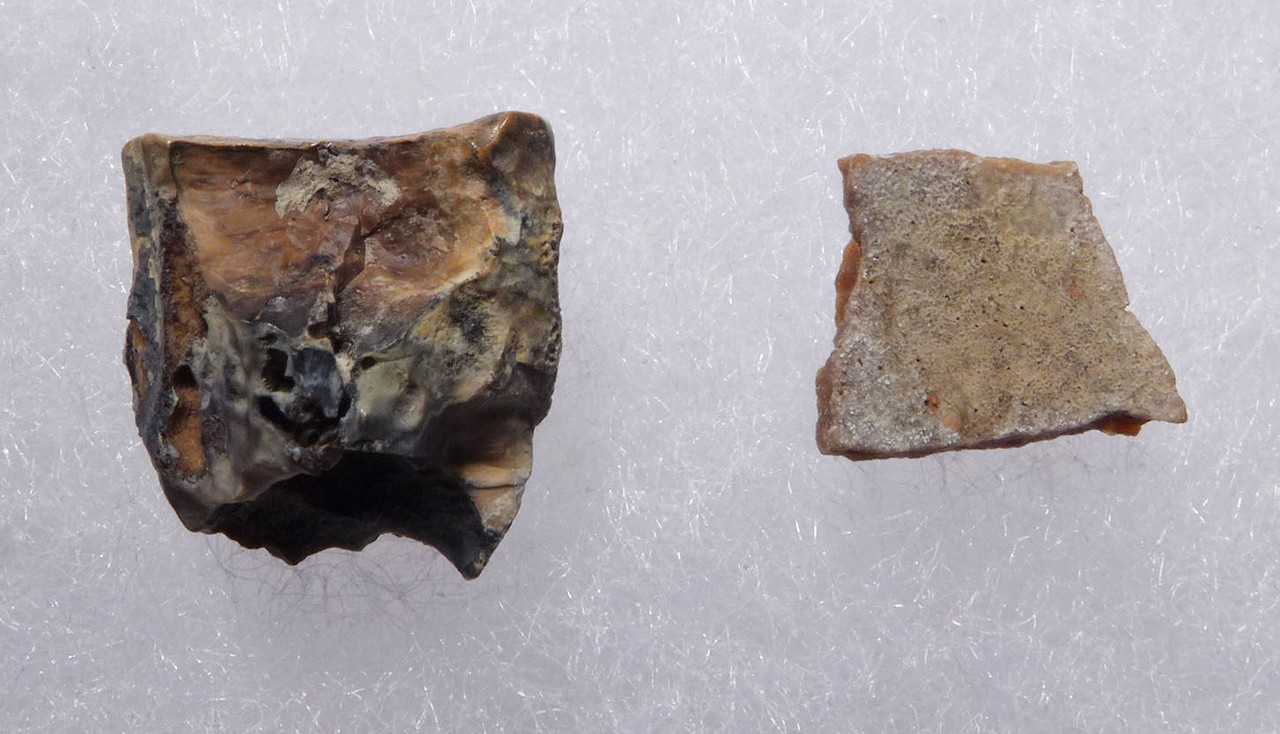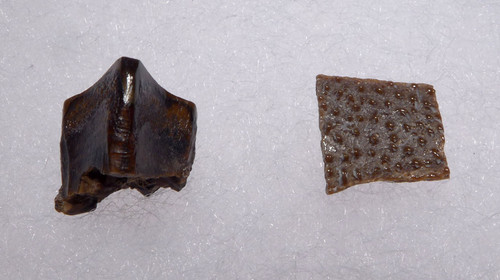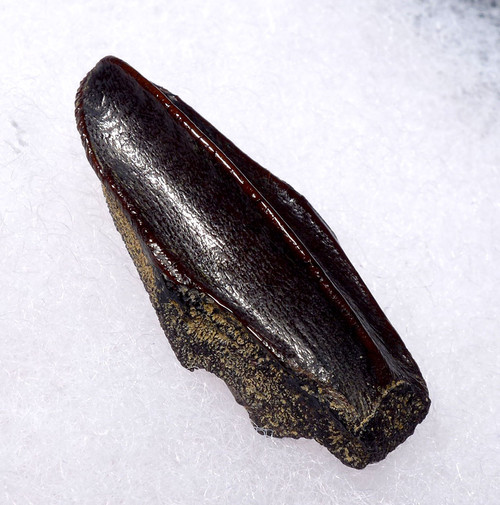Product Description
SEE MORE HADROSAUR DINOSAUR FOSSILS
SEE MORE RAPTOR DROMAEOSAUR DINOSAUR FOSSILS
From the Two Medicine Formation of Montana, U.S.A., this is a unique "predator and prey" fossil set of a CONTINUOOLITHUS dinosaur egg shell fragment that was found with the included hadrosaur tooth. Continuoolithus fossilized dinosaur eggs are from a yet unknown dinosaur but scientists are pretty much in agreement that it is from a non-avian theropod such as carnivorous raptor-type predators. Considering the association of these two fossils, it is possible these theropods were laying eggs near a hadrosaur food source or parent theropods were bringing hunted carcasses of the hadrosaurs back to the nesting areas to feed the newly-hatched dinosaurs. Whatever the reason, these fossils were found together in this formation and both offer an interesting perspective to the dinosaur relationships of the Late Cretaceous of this region.
HISTORY
Continuoolithus is an oogenus (fossil egg genus) of dinosaur egg found in the late Cretaceous of North America. It is most commonly known from the late Campanian of Alberta and Montana, but specimens have also been found dating to the older Santonian and the younger Maastrichtian. It was laid by an unknown type of theropod. These small eggs (measuring 77–123 mm (3.0–4.8 in) long) are similar to the eggs of oviraptorid dinosaurs (oofamily Elongatoolithidae), but have a distinctive type of ornamentation.
Continuoolithus nests would have been incubated under vegetation and sediment, unlike nests of Troodon and oviraptorids, which were incubated by brooding adults. Adaptations in the eggshell, such as high porosity and prominent ornamentation, would have helped the embryo breathe while buried. One fossil egg contains a tiny embryonic skeleton at an exceptionally young stage of development (perhaps eight to ten days old) showing the earliest stages of bone development.
 US DOLLAR
US DOLLAR
 EURO
EURO
 AUSTRALIAN DOLLAR
AUSTRALIAN DOLLAR
 CANADIAN DOLLAR
CANADIAN DOLLAR
 POUND STERLING
POUND STERLING
















